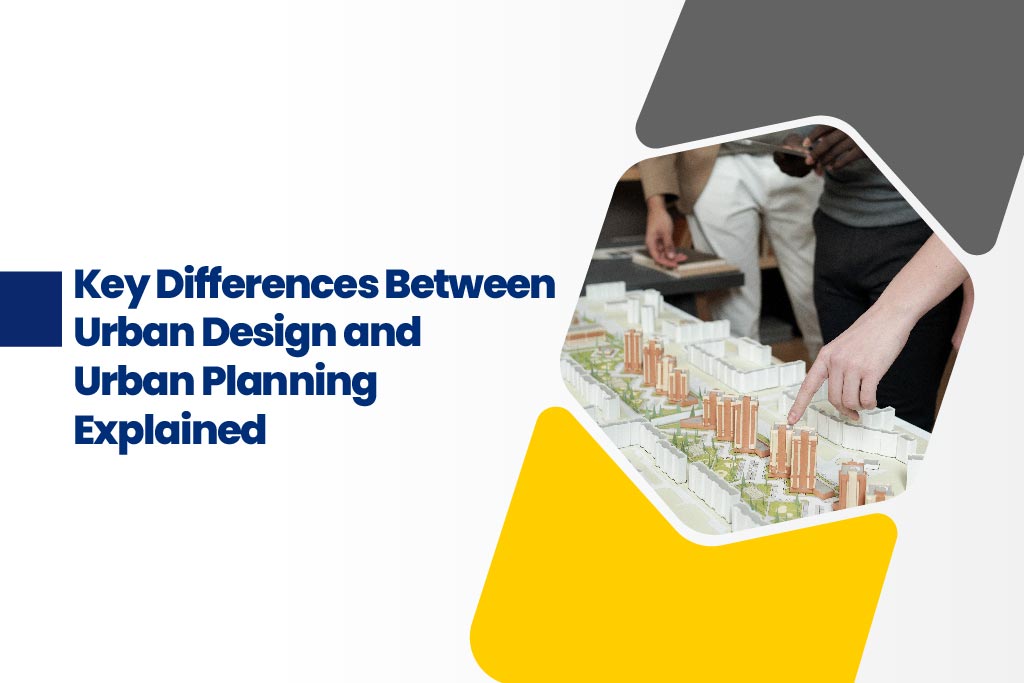When discussing the development of cities and communities, the terms urban design and urban planning often come up. While they are closely related and frequently overlap, they represent two distinct disciplines. Understanding the differences between urban design and urban planning is essential for anyone interested in shaping the built environment—especially for students at institutions like Karpagam Architecture, where both fields are studied with depth and creativity.
Let’s explore what sets these two areas apart and how they contribute uniquely to our cities.
What Is Urban Planning?
Urban planning is a broad, strategic field that focuses on the long-term development of land and infrastructure. It involves analyzing current land use, predicting future needs, and creating policies or regulations to guide sustainable growth. Urban planners consider economic, environmental, social, and political factors to develop comprehensive plans that benefit communities.
Key responsibilities of urban planners include:
- Zoning and land-use management
- Transportation and mobility planning
- Infrastructure and utility coordination
- Community engagement and stakeholder consultation
- Policy development and environmental planning
In short, urban planning sets the foundation and framework for how land should be used and developed.
What Is Urban Design?
While urban planning looks at the bigger picture, urban design zooms in on the physical form and aesthetic of spaces. It focuses on the design of streets, public spaces, buildings, and landscapes within a neighborhood or city. Urban designers bridge the gap between architecture and planning by shaping the human experience in urban environments.
Urban design involves:
- Streetscape and public realm design
- Pedestrian and transit-friendly layouts
- Visual aesthetics and architectural character
- Place-making and community identity
- Integrating green spaces and urban furniture
At Karpagam Architecture, students often explore urban design through studio projects that emphasize creativity, spatial experience, and visual coherence.
Differences Between Urban Design and Urban Planning
Though both disciplines aim to create livable, functional, and sustainable environments, there are significant differences between urban design and urban planning:
| Aspect | Urban Planning | Urban Design |
|---|---|---|
| Scope | Broad, strategic | Detailed, spatial |
| Focus | Policy, regulation, and land use | Physical design and aesthetics |
| Scale | City-wide or regional | Neighborhood or street-level |
| Tools Used | GIS, demographic studies, master plans | Sketches, 3D models, site plans |
| End Goal | Sustainable and efficient urban growth | Beautiful, walkable, and engaging spaces |
How Urban Design and Urban Planning Work Together
Although they differ in approach and scale, urban design and urban planning are complementary. A well-planned city may not succeed if its spaces are poorly designed, and the best-designed streetscapes can fail if not supported by effective planning policies.
For example, a planner may designate a zone for mixed-use development, while a designer ensures the public realm within that zone is welcoming and cohesive. At Karpagam Architecture, students are trained to understand both perspectives, enabling them to work on projects that balance functionality with form.
Why Understanding the Difference Matters
Knowing the differences between urban design and urban planning helps professionals collaborate more effectively. Architects, urban designers, and planners must communicate clearly to ensure that large-scale policies align with on-the-ground experiences.
For students and young professionals, understanding these distinctions can guide your career path. If you’re more interested in shaping policies and frameworks, urban planning may be your calling. If you’re passionate about crafting the visual and physical experience of urban spaces, urban design might be the better fit.
Conclusion
Urban environments are complex, evolving systems that require both strategic vision and thoughtful design. Whether you’re mapping out infrastructure needs or designing a vibrant city square, both urban planning and urban design play vital roles in shaping how we live, move, and interact.
At Karpagam Architecture, students gain insights into both fields, preparing them to become future leaders in designing smart, sustainable, and people-centered cities. Understanding the synergy—and the differences between urban design and urban planning—is the first step toward making a lasting impact in the built environment.



